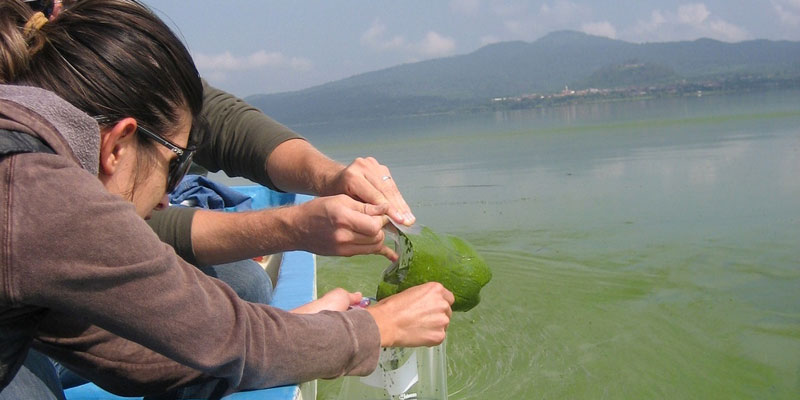Auburn University aquatic ecologist Alan Wilson and a team of biological, molecular and environmental scientists from three other U.S. institutions are taking on toxic cyanobacteria, also called blue-green algae or pond scum, in a five-year, $2 million National Science Foundation project.
In recent years, harmful outbreaks of noxious cyanobacteria have reached extreme levels in freshwater lakes, ponds and reservoirs worldwide. In addition to depriving freshwater aquatic plants and animals of sunlight and oxygen, toxic cyanobacterial blooms pose substantial health risks to people, livestock, pets and wildlife.
“Potable water is necessary for life, and algal blooms poison drinking water,” said Wilson, School of Fisheries, Aquaculture and Aquatic Sciences associate professor. “In this work, we will explore interactions between cyanobacteria and other, co-occurring species of bacteria.
“Our theory is that complex bacterial communities have a mutually beneficial relationship with cyanobacteria and may actually support the growth, persistence and control of toxic freshwater cyanobacterial blooms.”
Joining Wilson in the collaborative investigation are Dave Hambright and Lee Krumholz, University of Oklahoma; Hans Paerl, University of North Carolina at Chapel Hill; and Morgan Steffen, James Madison University. Researchers from Australia, Canada, China, France, Germany, Hungary, Israel and New Zealand also will be involved in a global survey of cyanobacterial blooms throughout the phases of the bloom.
For his role in the project, Wilson will run field experiments across Alabama to determine the importance of bacteria and cyanobacteria associated with toxic algal blooms.
The investigation’s goal, Wilson said, is to discover new ways — based on community, evolutionary and microbial ecology — to predict and mitigate harmful cyanobacterial blooms that threaten humans, animals and plants.
This collaboration is one of 10 newly funded projects supported through the National Science Foundation’s Dimensions of Biodiversity program.
This story originally appeared on Auburn University’s website.
(Courtesy of Alabama NewsCenter)













